Written and directed by David Hewitt, the short film “Belly Button’s” non linear narrative tells a story of humanities perceptions of life and how people handle it, which can trigger certain actions. The narrative is wrapped in a framing device which allows the story to come full circle with the use of the crossword puzzle. The title of the film “Belly Button” is used as a metaphor for the whole film, as it is about how people develop in different ways throughout life, but the word is physically shown through the use of a cross word.
The morals and accurate representations of people are presented through the use of a voice over. The deep, male voice is suitable for the film, as it documents the characters thoughts and feelings without the use of dialogue from the characters. This is effective for the audience, as it enables them to have a deeper connection with the characters, but also is effective in showing how the characters react to certain things in life, such as theft. The film opens with a blank screen with the white text “Satellite Pictures”. This links to our film “Shadow”, as our film will open with the name of the distributor, which will present the logo of “Film Four”. Furthermore, the two titles sequences will also link together, as we will have a blank screen, with white text. This is a direct and informative way of ensuring the audience know the information about the film before it has begun.
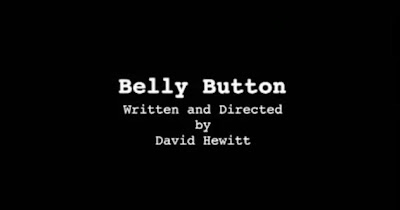
Predominantly, the film incorporates nature, as a theme to represent the different emotions of humanity. This is immediately presented to the audience through the use of a mid-close up of a half naked male, jumping out of a river in slow motion, in synchronisation with a non diagetic sound of a gong. The voice over then begins, commentating on the mans actions, and why he is in that specific location. This instantly captures the audience’s attention, as it is enticing, and interesting. The six characters presented in the film are all from different age groups, but predominantly are associated in the adult age group. The way in which the film uses nature, and the parody of a voice over from a documentary, enables the target audience of adults, to be attracted to the film, and the narrative enables it to be both easily understood, but is also interesting. As the male voice over is most acquainted with nature documentaries, the film could be comparing the animalistic qualities of mankind.

This scene is then cut to a side-shot close up of a female sat on the ground, with the non diagetic major key music playing, with the male voice over describing what she is feeling. This particular shot should be used in our film, as when the protagonist Ruby Fox is thinking about her previous bullying events, the camera should be shot at a close up, to explore the characters sad emotions, but the side shot could further convey the idea that she is upset.
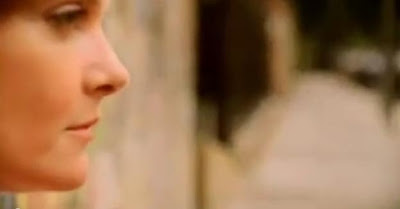
The framing then changes, as the shot continues, but the screen is then cut to a double screen, in synchronisation with major key piano music. This enables the audience to see movement of the character at one side of the screen, and a close up of her emotions at the other side of the screen. This influences our film “shadow”, whilst filming the bullying scene, as it can show her emotions, but also the audience are able to understand why she upset, so the side screen helps the narrative too be easily understood. So both shots are similar in conveying the characters emotions. The scene also relates to the idea of the film depicting the animalistic qualities of mankind, for when the narrator says “unlike humans, the dog will never know that one day it will die, it probably thinks that it will live forever”. This is a sinister insight for the audience, into the characters mind, but shows that she is a thoughtful character, and the double framing in which she is shot reflects her journey. The mid-long shot, in particular, when the character Kikki is walking down the steps, could be used in our film, for when the character Ruby fox is walking to college, but perhaps the shots could fade as she walks, so that we use elliptical in order to show the passage of time and so that the audience are not bored whilst watching the film.
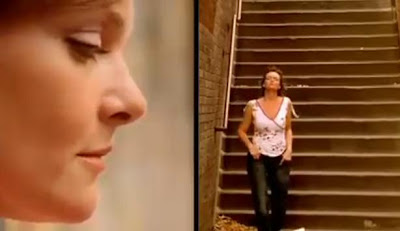
In the next scene the character Mary is, is shot using eye line matches to her cross word puzzle. The director has cleverly used the crossword puzzle as a loop hole to link all of the characters together throughout the ending, therefore the close up shot of the puzzle is important. This is an important to the narrative of the film, and therefore we should have a similar shot in our film of the necklace shot, in order for the audience to gain a better understanding of the film, and for them to understand that the necklace is the key to the understanding of the film. Furthermore, the crossword which is used in the film allows the film to have a non-linear narrative, which is engaging for the audience.
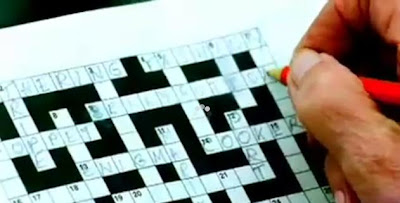
The scene in which Mary is first presented is shot from a mid-long shot, with fast paste editing, so that she is framed directly in the centre of the shot, with the environment around her moving in different directions. This is a huge inspiration for our film, as I believe that this shot should be used when Ruby fox will be stood at a bus stop, waiting to go to college. It depicts the character emotions; that she feels lonely, and vulnerable, as the world just passes beside her. Furthermore, the over exposure of the shot, suggests that the characters world is pleasant, and enjoyable, and it makes the audience feel good about themselves, and the scene is filled with vibrant colours. In contrast to this, we should use under-exposure on the bus stop scene to suggest that the character is sad, and it will convey the same message to the audience.
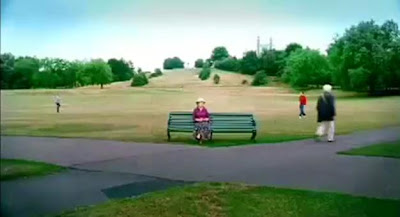
The scene then changes to an over the shoulder shot of a man on a motor bike. Tracking is also used in order to gain a sense of travelling, as the audience feel like they are travelling with the character. This is an interesting shot as it gives the audience a sense of power, and control of the film – therefore it is dramatically pleasing. The voice over continues through out to explore how the character is feeling, and then the camera cuts to a long shot of the sky, to present birds flying. This could represent that the character feels that he wants to be like the bird: free. This could link in with our film, as Ruby fox feels enclosed in her own life, so perhaps we could use a similar shot in our film.
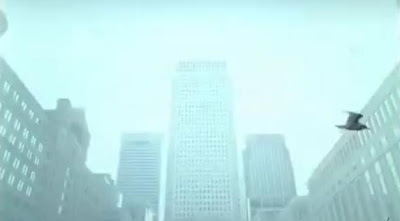
A graphic match is then used to cut to the next scene; which we could use in our film, as they are interesting for the audience to watch, and the continuity then looks smooth. The major key violin music which is then portrayed gives the audience a sense of uplifting. However, the long shot of the woman with a black umbrella links to the rain that is only portrayed in this scene. This portrays pathetic fallacy, as the weather reflects her mood, and the underexposure further implies her emotions. The male voice over then explain that the character has recently broken up with her partner, hence the moody atmosphere. This could be used in our film, as it is effective in portraying the characters emotions. But the scene is remained in high spirits due to the major key music non diagetic which plays throughout.
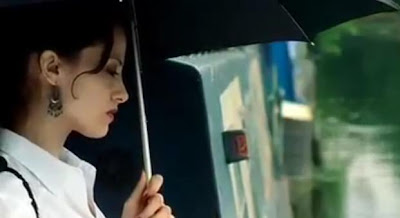
Elliptical Editing is then used in order to show the passage of time, but the film also then changes in tone, as a dark framing is used, shot at a high angle tilt, of the new character. The sudden change from major key non-diagetic music to minor key denotes tension, and is used to create an atmosphere, as a stressed gangster is filmed pacing pack and forth up the street, but as he paces, jump cuts are used in synchronisation to the music, to enhance the speed of the film and to ensure that the audience feels the atmosphere of the play. This is a parody of the genre thriller, which links to our film, as ours portrays the same genre, therefore we could perhaps use similar shots, and cuts, in particular jump cuts. Furthermore, the high angle tilt suggests that the character is inferior, and a weak person. Handheld, close ups are then presented to show that the character is scared, which we could use in our film, as it is a powerful and effective way in showing how a character is feeling, without the use of over presenting close ups.
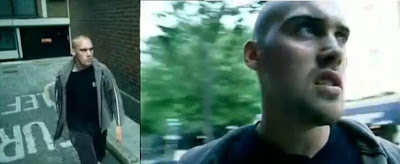
A particularly engaging scene for me, is the one which beings after the non-diagetic voice over describes that the male character “wishes he had a girlfriend”. The next scene cuts perfectly to the character Kikki, from a long shot. This links the two characters together, and gives the audience a subconscious knowledge that the two characters will be together. This is dramatically pleasing for the audience, and could used as a device on our film, to keep the audience engaged. The character Kikki can also relate Ruby Fox from our film, as she feels “lonely”, in accordance with the non-diagetic voice-over. Therefore the medium and close up shots of her, could be used in our film. The elliptical editing which is used during the next two scenes, should definitely be used in our film, as it is an efficient way to shift the time around in the film, and enables the shots to flow smoothly – enabling the continuity of our film to be precise.
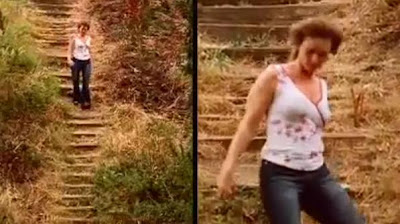
The way in which the character Kikki is filmed with a yoyo throughout the entirety of the films, is cleverly used as a metaphor for the film; she drops the yoyo’s string, and it continues to spin, and in order for the yoyo to continue to spin she put pulls it back up again. This can be symbolic for the way in which even though the character feels lonely and down, she pulls herself back up and continues on her path to life in hope that she will find happiness; which related strongly to the character in out film, so perhaps we should use a metaphor for the character, to interest the audience.
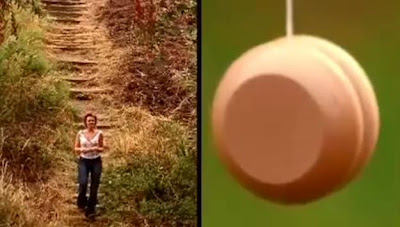
For me, the ending is particularly engaging; because the film has a non linear narrative, and it loops, the audience have been led to believe that each character is individual, walking on a completely different path. The medium log shot with high exposure however, during the end scene shows the characters meeting in the centre of the park, where the old lady featured at the beginning of the film on the bench, is sat; this could also be metaphorical for the characters leaving their old lives behind. Jump cuts and close ups are then used when the characters collide, to show how each character looks. The non-diagetic man continues to speak, but in the narrative of the old ladies thoughts, and this allows the audience to see her perspective of each character. The end clip consists of the elderly lady examining her cross word, in synchronisation with the major key music, and her realising that the final word is “belly button”: hence the title of the film. This word loops all of the characters together, and links to the film which we will be creating, as we intend to create a film with a non linear narrative, which engages the audience through the use of an interesting narrative, the use of a voice over, in replacement of dialogue which immediately creates a bond between each character, and the use of continuous switches from major key to minor in music. This combines with the interesting use of split screens, and fast paced editing made the film really engaging for me, and I feel we will definitely incorporate some of the shots into our film.


No comments:
Post a Comment